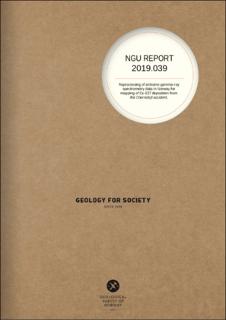| dc.contributor.author | Baranwal, V.C. | |
| dc.contributor.author | Stampolidis, A. | |
| dc.contributor.author | Koziel, J. | |
| dc.contributor.author | Watson, R.J. | |
| dc.contributor.author | Rønning, J.S. | |
| dc.coverage.spatial | NORDLAND | |
| dc.coverage.spatial | TRØNDELAG | |
| dc.coverage.spatial | INNLANDET | |
| dc.date.accessioned | 2020-08-19T07:46:10Z | |
| dc.date.available | 2020-08-19T07:46:10Z | |
| dc.date.issued | 2020 | |
| dc.identifier.issn | 0800-3416 | |
| dc.identifier.uri | https://hdl.handle.net/11250/2672907 | |
| dc.description.abstract | A catastrophic nuclear accident occurred on April 26th1986 at Chernobyl nuclear power plant outside Kiev, Ukraine. Because of the accident, several areas in Norway received radioactive fallout. Initially, several anthropogenic radionuclides were present in the fallout. However, most of them disintegrated into stable isotopes due to their short half-life. Today, Cs-137 with a half-life of 11,000 days (ca 30 years) remains in significant quantities and may constitute a potential health hazard. If soil of these regions is not altered due to agriculture or other purposes, then Cs deposition remains intact and it is absorbed by flora and fauna. | |
| dc.language.iso | eng | |
| dc.relation.ispartofseries | NGU-Rapport (2019.039) | |
| dc.rights | Navngivelse 4.0 Internasjonal | |
| dc.rights.uri | http://creativecommons.org/licenses/by/4.0/deed.no | |
| dc.subject | RADIOAKTIVITET | |
| dc.subject | GEOFYSIKK | |
| dc.subject | RADIOMETRI | |
| dc.subject | FORURENSNING | |
| dc.subject | CESIUM | |
| dc.title | Reprocessing of airborne gamma-ray spectrometry data in Norway for mapping of Cs-137 deposition from the Chernobyl accident | |
| dc.type | Report | |
| dc.description.localcode | 66803 | |
| dc.source.pagenumber | 61 | |
| dc.relation.project | (366900) Utarbeidelse av Cs-oversikter fra fly- og helikoptergeofysikk | |

